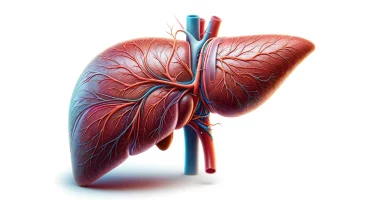Penile cancer
What is penile cancer?
Penile cancer is a cancerous disease in which a malignant tumor originating from epithelial tissue is localized in the area of the glans, foreskin, or body of the penis.
Penile cancer is a rare disease. The frequency of diagnosis is less than 1% among all oncologic pathologies and 1-4% in the structure of onco-urologic diseases. Penile cancer is most often diagnosed in men aged 50-60 years, but the disease can also occur in children.
An aggressive course and a tendency to the rapid appearance of metastases characterize this form of cancer. Almost 30% of patients have involvement of regional lymph nodes and distant organs.
Types
The following clinical forms of penile cancer are distinguished:
- Ulcerative. Characterized by forming an ulcerative defect, rapid spread with invasion into the cavernous bodies, and early appearance of metastases.
- Nodular. Characterized by the superficial location of the tumor, infiltrative growth, and slow development.
- Papillary. The tumor is superficial, grows slowly, and the risk of metastases is low.
- Swelling. The neoplasm proliferates and conducts to metastasis very quickly.
Depending on the degree of prevalence of the malignant process, the following stages of penile cancer development are distinguished:
- First, the tumor diameter is less than 2 cm, and there are no signs of infiltrative growth.
- The second change affects the subepithelial structures; the diameter of the tumor is 2-5 cm.
- Third, the tumor infiltrates the cavernous bodies.
- Fourth – the pathological process involves the surrounding structures (urethra, prostate, fiber, etc.).
Penile tumors can metastasize to lymph nodes and internal organs (lungs, liver, bones, heart, and brain).
Symptoms
About 85% of penile tumors form in the glans region. The tumor may resemble a small wound, plaque or pigmented spot in the early stages. In the future, the focus may thicken and increase in size, cover an increasing area of the genitals, and interfere with the free displacement of the foreskin.
Destructive changes are accompanied by itching, pain, and exudation. Later, there may appear bloody or purulent discharge, unpleasant odor, as well as pain during urination.
At later stages, the general well-being of the patient worsens. Constant weakness, fatigue, lack of appetite, weight loss, and nausea may be present. Gradually symptoms appear on the side of the organs affected by metastases – it may be pain in the right subcostal area, impaired consciousness, coughing, hemoptysis, etc.
Reasons
The mechanism of penile cancer development is not fully understood. A certain role is played by chronic diseases of the genitals, especially in combination with smoking and regular violations of the rules of personal hygiene.
The following conditions predispose to the disease:
- phimosis (a narrowing of the foreskin);
- papillomavirus;
- benign masses in the genital area;
- positive HIV status.
The risk of penile cancer is higher in homosexuals and men who frequently change sexual partners and neglect barrier contraception.
Diagnosis
Suspicion of neoplasia may arise in the process of physical examination. To clarify the nature of the pathological process, a man is prescribed a comprehensive diagnosis:
- laboratory tests (general blood tests, clinical urine analysis);
- Ultrasound of the penis (allows you to assess the depth of penetration of the tumor);
- biopsy or diagnostic circumcision (morphological examination of tissues allows to determine the type of tumor, assess the trend of the disease, and prescribe targeted treatment);
- puncture biopsy of regional lymph nodes (reflects the degree of spread of atypical cells and allows to plan the intervention);
- MRI of the pelvic organs (provides information about the condition of surrounding organs).
Diagnosis of distant metastases is carried out with the help of radiography, CT or MRI, and ultrasound of internal organs.
Penile cancer treatment
All cases of penile cancer are treated with a combination of treatments. The first step is to remove the tumor. Then, the patient is given chemotherapy and radiation therapy. The less aggressive the tumor and the earlier the treatment is started, the better the prognosis for the patient.
Conservative treatment
Conservative approach is used when the malignant neoplasm is localized in the superficial layers of the skin of the penis. In this case, it is possible to destroy the tumor with the help of laser technology. To increase the effectiveness of treatment, chemotherapy is prescribed.
Radiation and cytostatic therapy are also recommended after the surgery. Such treatment helps to eliminate residual malignant cells in the surrounding tissues and lymph nodes.
Surgical treatment
If the clinical situation allows, doctors do everything possible to preserve the penis. A radical approach in the treatment of penile cancer involves partial or complete penectomy combined with lymphadenectomy. The malignant tumor and 2-3 cm of healthy tissue are removed. Total penectomy involves removal of the penis and formation of the urethral meatus on the perineum.
All these treatment options are available in more than 770 hospitals worldwide (https://doctor.global/results/diseases/penile-cancer). For example, partial penectomy is performed in more than 30 clinics across Germany for an approximate price of $10.0 K (https://doctor.global/results/europe/germany/all-cities/all-specializations/procedures/partial-penectomy).
Prevention
There are no specific methods of penile cancer prevention. To reduce the risk of developing the disease, doctors recommend giving up bad habits, rationalizing the daily routine, leading an active lifestyle, timely and fully treating urological diseases, as well as refusing casual sexual relations. All adult men should undergo an annual urological examination.
Rehabilitation after surgical treatment
The scope of the intervention determines the peculiarities of the rehabilitation period. In most cases, the patient is discharged on the 3-5th day after surgery. Further follow-up is carried out on an outpatient basis. Several times, the patient must come to the clinic for dressings. After achieving remission, examining after 3 and 6 months is recommended. Further dispensary examination is carried out once a year.


